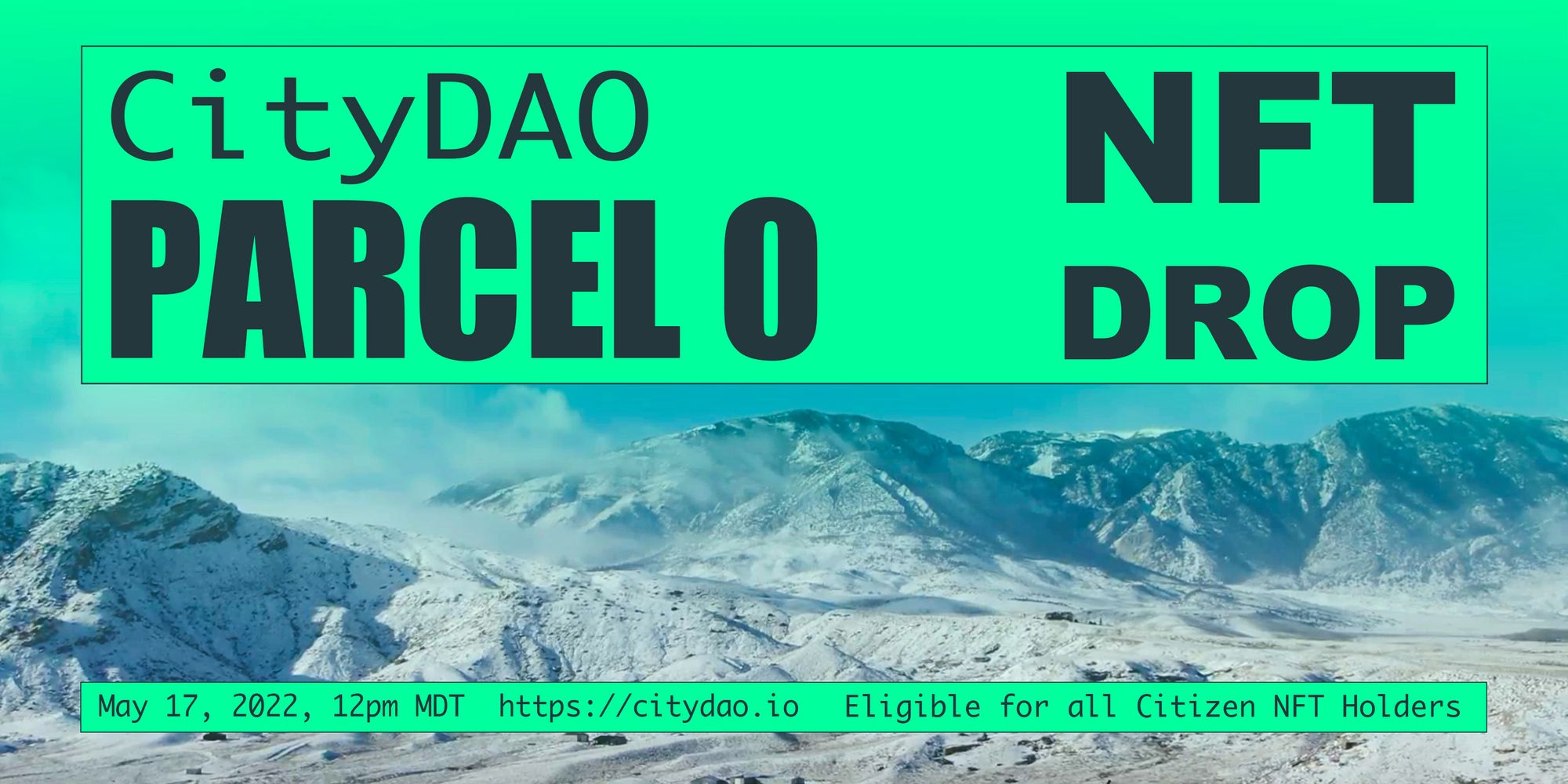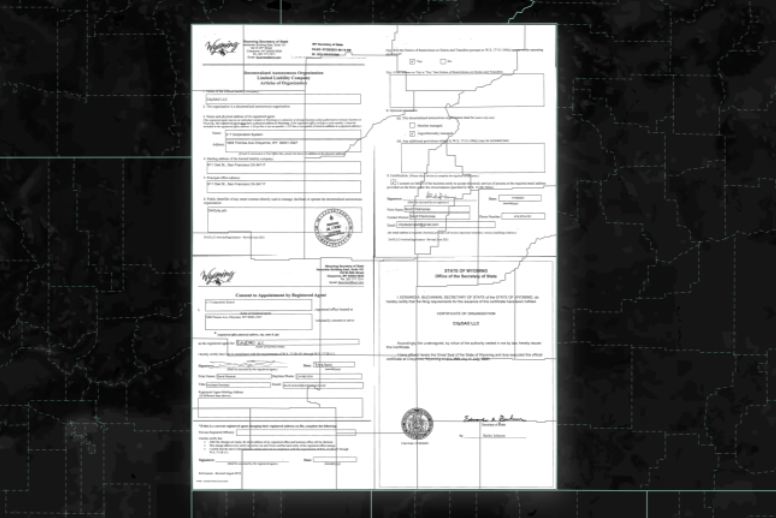CityDAO & Citizenship

So far in the Down the Rabbit Hole series, we have covered NFTs, DAOs, fractionalization, and we have also looked at a recent real estate application utilizing smart contracts.
We are excited to share about a really cool and creative community that is mixing a bunch of these elements together to create a new kind of city, a decentralized collective that is building a digital city/network and collectively purchasing land that the DAO and it’s citizens will use and govern.
Wyoming's new DAO LLC law allows DAOs to be recognized as legal entities by state institutions like courts. This has opened the door to some really exciting experiments like CityDAO. CityDAO started with a single tweet on the first of July, 2021. It launched with aspirations of building the city of the future on the Ethereum blockchain by tokenizing land, property rights, and governance - starting with a single parcel of land in Wyoming.
Cities are accelerators of opportunity, and community hubs, yet the mechanisms that govern land, property, and voting are antiquated and very often concentrate power among wealthy landowners and centralized power brokers. CityDAO, since inception, has aimed to create a network city with digitally legible governance on the blockchain to bolster accessibility, interoperability, and opportunity for all.
Many centralized, top down attempts to radically rethink cities, like Google's Sidewalk Labs in Toronto, have failed to garner community support, not least because they are sponsored by big tech and monetized by runaway surveillance. In contrast the CityDAO conviction is in transparent, decentralized, community governance.
Okay, so what have they actually done?
Holders came together in a Discord community and began by launching an NFT project for people to contribute to the DAO fund in exchange for a Citizenship NFT. There were three levels of citizenship based on investment, both for purchase as well as for the work put in by some of the founding members. They utilized the Articles of Incorporation for the artwork on the initial citizenship NFTs. With that NFT drop CityDAO raised over 25 ETH in about 2 weeks. Then, through a communal and democratic process of voting made possible by the on-chain NFT’s, they selected and purchased a 40 acre parcel of land in Wyoming.

While CityDAO initially assumed that the land ownership could be fractionalized between all of the citizens, they found that it was legally necessary to separate actual, legal ownership from governance and use to avoid financial complications and turning their tokens into regulated securities. This collective of extremely motivated, creative, and organized citizens have since conceptualized a way to address this hurdle and have recently announced Parcel 0 NFTs.
The Parcel 0 experiment is a means to prove the concept of creating wrappers for traditional rights allocations related to property. In terms of the “bundle of rights” that comprise property laws in the United States, the Parcel 0 NFT separates the control portion of rights (governance) while extending use and enjoyment rights (use).
Since property rights are at the core of city building, economic growth, and individual prosperity - CityDAO seeks to understand and experiment with the distribution of property rights. The better CityDAO can understand how property rights allocation affects the real world, the more they can discover new ways of sharing control and power over the places we live, and hopefully creating a more fair and equitable future.
The Parcel 0 NFT represents a license agreement between Holders of the Parcel 0 NFT, and Parcel Zero, LLC, (a wholly-owned subsidiary of CityDAO, LLC), and grants the following rights over the land:
- Use of the property for visitation and conservation (the “Permitted Use” - which is set by CityDAO, LLC algorithmic governance)
- Governance Rights (over the Parcel 0 treasury and projects within the scope of the Permitted Use)
In the spirit of experimentation, Parcel 0 will be symbolically divided into areas called plots, with each plot being an ERC-721 NFT containing metadata of the plot in the form of symbolic geographic coordinates and representations.
Also, within the spirit of experimentation, the individual plot size will be determined by Citizen demand during the mint. At the end of a forty-five (45) day mint period, the Parcel will be divided equally by the number of plots minted.
Regardless of the outcome of this particular experiment, we are excited to share such project with you as a way to illustrate the incredible potential for innovation and human ingenuity that are being made possible by the emerging technologies of Web3.
